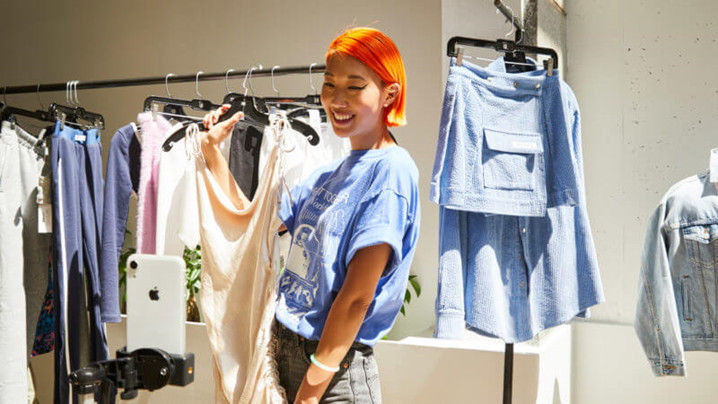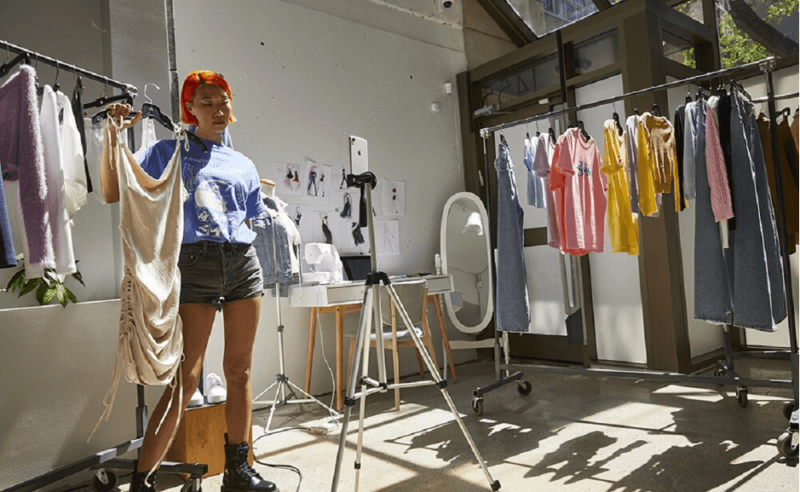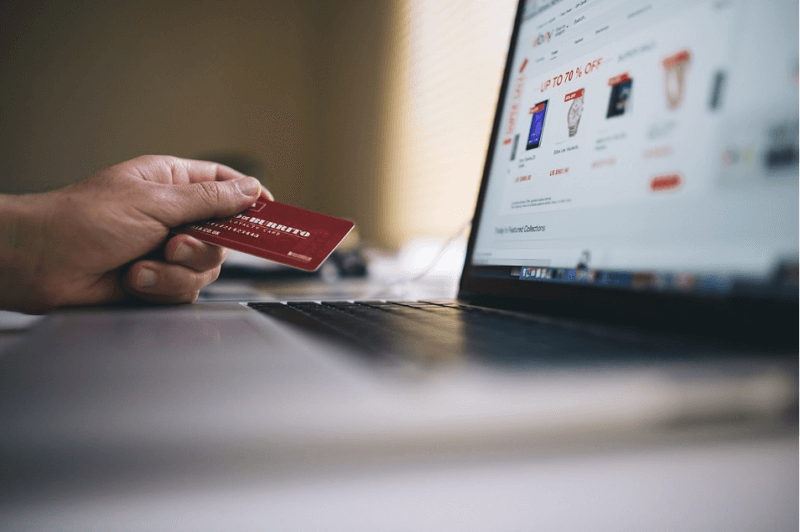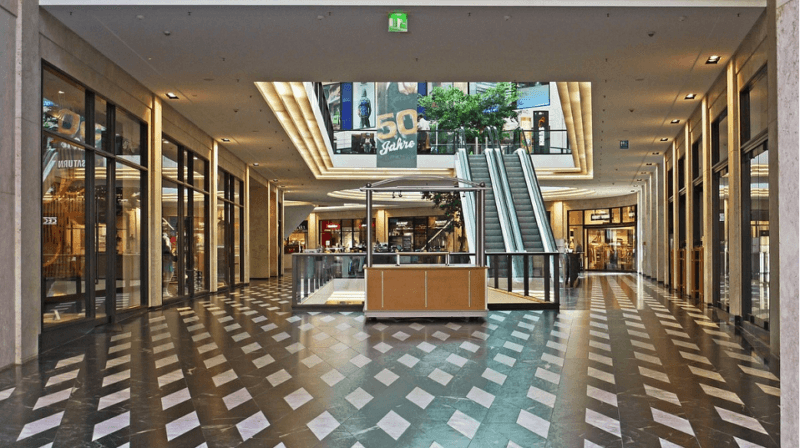Technology saving retail businesses from going under
Retailers need to up their game to thrive in today’s environment. Here’s how to apply technology to better serve customers’ needs.
The pandemic is changing the game for retail, and fast. Not only is the competition fiercer than ever before, but the coronavirus has been the cause of a dramatic decrease in in-store traffic, making it difficult for retailers to stand out from the crowd.
While the situation has forced some companies to shut down, many have realized that if they want to break through and maximize profits, they will need to adapt to more flexible business models with the adoption of new technologies. In order to remain competitive, online and offline experiences must “wow” the consumer. Having a great product is not sufficient to satisfy today’s buyer profile.
In order to master the art of selling in a COVID era, one must first focus on addressing the negative aspects of traditional shopping. Waiting in long queues to settle transactions and being immersed in large crowds are the most obvious customer pain points. Retailers need to understand that shopping experiences need to be quick and painless. Checkout processes must be safe and convenient. Extra effort should be put especially into converting a customer into a loyal one.
To get potential buyers out of the house and into their physical stores, retailers must raise the bar for in-store shopping with exceptional customer service by adding creative touches to engage and resonate with people. E-commerce sites and virtual experiences need to be simple, fast and user-friendly. The secret sauce for these struggling businesses lies in the ability to combine the two platforms and create an omnichannel retail strategy to provide the best possible experience all around, without having to choose one or the other. In today’s modern economy, the inter-connected customer shouldn’t have to choose either.
The virtual store needs to be an extension of the physical one and vice versa, and forward-thinking companies have already begun disrupting the retail market through digital transformation that has built a sustainable business model that even COVID can’t take down.
While essential services such as grocery stores have been capitalizing on the crisis, the reality is most retailers have been struggling financially. Now more than ever, contactless technologies such as Lightspeed’s retail point of sale (POS) system are delivering personalized experiences by helping shopkeepers manage transactions and enable seamless checkout processes from an intuitive touchscreen. The dramatic increase of agile hardware and software implementations like this has been driven by the need for safety.
Long gone are the days when people browsed a shopping mall without the intention to buy. Today, people want their shopping experiences to be quick, safe and productive. But how do you get people to feel safe and pleased at the same time? POS systems are making processes simpler and a lot more efficient by facilitating customer-employee interactions, so that people don’t need to hang around waiting, causing crushing crowds to form. Retailers that understand the significance of adapting to a customer’s expectations and changing needs will ensure their survival amid unprecedented times, and beyond.
The pandemic has driven e-commerce sales to surge to an all-time high. This new reality has forced many retailers to move a portion of their business online to accommodate these customers, and experts believe these lifestyle changes will continue long after the pandemic subsides. Companies like Lightspeed aren’t just helping deliver faster and more personalized experiences for the traditional store, they’re empowering retailers with the tools to build feature-rich websites that drive more online traffic.
Adapting to the ever-changing retail market
There is considerable pressure on retailers to deliver greater shopping experiences than ever before. The COVID crisis has completely altered the way we shop and what we buy. Consumer shopping habits have shifted away from voluntary items like vacations, clothes and luxury cars to necessities such as groceries and household essentials. In fact, many popular clothing retailers have been forced into closure or bankruptcy since the pandemic hit earlier this year. Inditex, the company behind fashion retailer Zara, made headlines back in June for closing 1200 traditional stores around the world, with the majority concentrated in Asia and Europe, in an attempt to boost online sales.
Retailers that can adapt to the ever-changing market will not only survive, but profit in the end. Today’s buyers expect a shopping experience tailored to their individual needs. Contrary to the one-size-fits-all approach to service seen in the past, what they are looking for is to connect with brands in memorable and personalized ways.
Media streaming service powerhouse Netflix has seen the number of signups double since the end of 2019. That’s because it uses powerful and insightful data to analyze its subscribers’ viewing habits, allowing it to suggest content based on a particular individual’s preferences or previously watched shows. For Netflix to continue to remain at the forefront of the media streaming industry, it must sustain desirable user experiences by consistently providing better content and easy to navigate interfaces.
Not everyone can compete with Netflix. But with the right mix of in-store and online technologies, even smaller businesses can increase customer satisfaction. For example, tools that assist in responding to customers as quickly as possible can greatly affect how a business is perceived. People searching for convenience tend to be time-sensitive, and the right in-store technology can help achieve that. Real-time analytics to gain better insight into what a customer’s preference is and what will get them to buy more — in the physical and virtual store — is another way to prepare for this new, lingering normal.
In-store versus online
Today’s internet-savvy consumer has already spent hours online doing research to make sure they’ve compared, selected, and eventually purchased the perfect product for their household. Millions of people are online right now searching for quality products that fit within their budget. So why would anyone get out of their comfortable clothes and rush to the store when they can conveniently have products delivered to their door without having to leave their home in the first place? Because some items are better off bought offline.
The seamless online experience should be one that drives efficiency and convenience. However, there are disadvantages to e-commerce beyond a business’ control. Packages being stolen, not being able to touch or try the product and delays in delivery service, especially during the pandemic, are all strong enough negatives to get people out of their living rooms and back into the shopping malls.
Let’s face it, many people still enjoy the act of browsing their favorite store. Brick-and-mortars are where you can touch that Apple iPhone, compare sizes small and medium before buying, interact with other human beings who can answer questions, and walk away with purchases the same day you make them. Retailers who understand the value of establishing meaningful connections are creating personalized journeys using technology to build solid relationships with their customers to not only satisfy their expectations, but also encourage repeat buyers.
Spurred by this need for superior in-store customer service, retailers are turning to intuitive devices to help them better understand the buyer’s profile. Where many businesses once suffered from general obliviousness about the needs and wants of their clients, they can now obtain real-time data on purchasing habits and more. POS systems are becoming increasingly popular among merchants for their ability to collect insightful customer data, process transactions and inventory on the go, enable contactless payments and empower staff members to make sales from anywhere in the store. This advanced technology is being utilized to improve customer satisfaction by reducing long in-store queues and speeding up checkout times.
The most obvious advantage to online shopping is convenience. The long wait times and potential crowds associated to the traditional shopping experience can be off-putting for some. People want to compare product prices and quality on their own time, in their own homes. Customers expect personalized shopping experiences online, as they do in physical stores. There are software systems with great usability helping businesses reinvent themselves to deliver excellent customer experiences. Cloud-based POS software is enabling retailers to synchronize their physical inventory with their e-commerce stores to upsell to more customers online and increase profits. For example, Lightspeed’s intuitive POS system packages all of this at the palm of your hand.
What the future of retail looks like
The economic and social impact of the global pandemic has forced shopping habits to change in the blink of an eye. These drastic changes prompt the question — will this shift in consumer behavior ever go back to the way it once was? Unfortunately, no one can predict the future. What we do know today is that the key to any business’ survival is in better understanding, adapting and responding to customers’ needs and wants, and technology is helping them get there. While the future of retail is uncertain, this pandemic has certainly uncovered what the modern shopper wants, and how. Being proactive in the way a retail business is managed through these challenging times, is vital.
It is especially critical for smaller businesses to meet their customers wherever they shop – whether it be online, in person, or both. A retailer’s biggest challenge is building and maintaining a loyal customer base. However survival in today’s ever-changing economy requires the creation of a reliable customer base that will refer new ones to buy. Technology helps empower a business to be more agile, so they can create tailor-made experiences to maintain their loyal customers and attract new ones.
Indeed, some of the changes resulting from COVID have been negative, however it is important to note that there are companies profiting from it due to the right strategies they’ve put in place. Companies that have been able to reimagine the store of the future and make the necessary adaptations to fight through it have come out on top. At the end of the day, retailers are aiming to achieve profitable outcomes that will last beyond the post-COVID era. Just as tech giants like Netflix need to grow their user base, so do SMBs. Whether you choose to invest in in-store strategies or e-commerce intelligence, the path to success is clear. Being proactive and using the online/offline technology framework to deliver better customer experiences will drive the most profit.
Success Story:
What started in 2006 with the idea to sell cool clothes to high school kids, has grown into a network of 7 retail locations across Canada. Over the years, Exclucity has remained successful by staying in touch with real sneakerheads while also helping newcomers find their sneaker identity.
Trent Hall, Owner Exclucity – Ontario and Quebec
Lightspeed is a cloud-based commerce platform powering small and medium-sized businesses in over 100 countries around the world. With smart, scalable and dependable point of sale systems, it’s an all-in-one solution that helps golf courses, restaurants and retailers sell across channels, manage operations, engage with consumers, accept payments, and grow their business.






